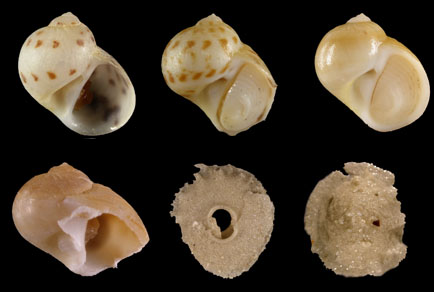Abstract
We analysed sympatrically occurring specimens from Lizard Island, Queensland, Australia identified on shell characters as Naticarius onca (Röding, 1798) and found them molecularly separated into two distinct clades. Additionally, we obtained sequences from nine morphologically similar, randomly collected naticid egg masses (‘sand collars’) from Lizard Island and two other Queensland localities. Eight out of the nine egg masses unambiguously grouped with one of the two N. onca clades. The two clades show no common haplotypes, resulting in a sequence divergence of 11.1% in the COI gene fragment, and 4.0% in the 16S gene fragment, while the intraspecific variability within the two taxa was 1.0–2.4% and 0.2–0.4% for COI and 16S, respectively. The adult shells of members of the two clades from Lizard Island are morphologically indistinguishable, showing overlapping intraspecific shell variability in colour pattern, shape, and protoconch morphology. Thus, N. onca contains at least two independent lineages that probably represent distinct species. One of the egg masses from Lizard Island, which is morpho-logically similar to N. onca, proved to be assigned to the rare N. concinnus, the first documented evidence of this species from the Great Barrier Reef. Our results illustrate the usefulness of egg masses in barcoding approaches and taxonomic assignments.

